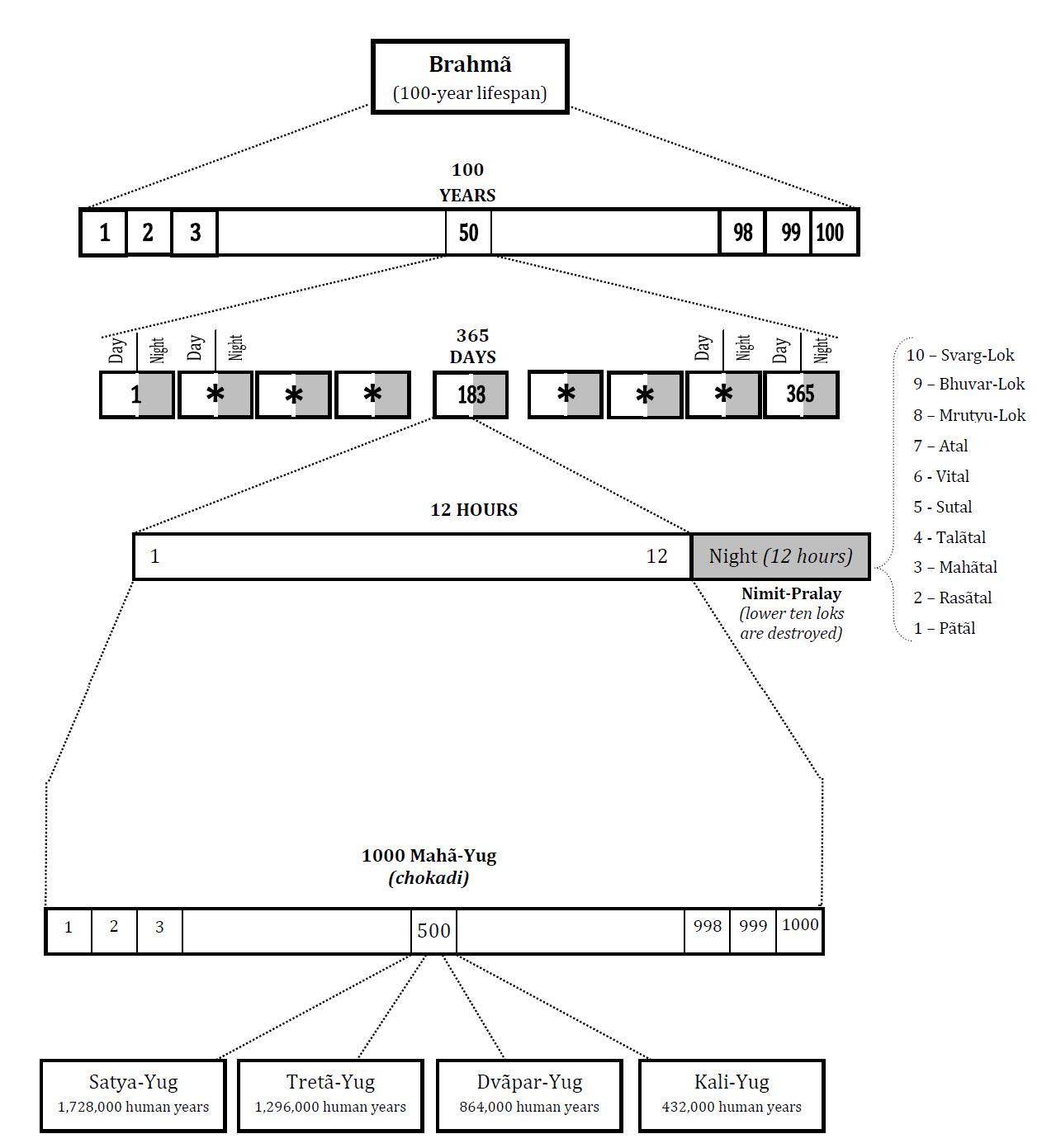Find out more about how this website uses cookies to enhance your browsing experience.
Time is measured at a scale that is far beyond our imagination, and much greater than the time that is measured on earth. The calculation for this measurement is stated in the shãstras. It has been simplified into the diagram below which makes it easier to understand.

Brahma lives for 100 years (3.1536 x 1014 human years). Each year is made up of 365 days. At the end of his 100-year lifespan, prakrut-pralay occurs, in which the whole brahmand (the 14 loks) is destroyed. A new brahmand is then created, with a new Brahma.
Brahma’swhole day is made up of 24 hours: a 12-hour day and a 12-hour night (8.64 x 109 human years).
During Brahma’s day, the lower 10 loks of the brahmand are created; and they are destroyed during the night. This is called nimit-pralay. The lower 10 loks are then created the next day. (The upper four loks are created during Brahma’s first day, and they are not destroyed until Brahma dies, and prakrut-pralay occurs)
During Brahma’s 12-hour day (4.32 x 109 human years), 14 Manus and Indras reign and die, and 1000Maha-Yugs (chokadis) occur.
A chokadi is the passing of four yugs: Satya-Yug lasts for 1,728,000 human years; Treta-Yug lasts for 1,296,000 human years; Dvapar-Yug lasts for 864,000 human years; and Kali-Yug lasts for 432,000 human years. This means one chokadi is completed in 4,320,000 human years. Therefore, 1000 Maha-Yugs occur during one day of Brahma. The destruction that occurs during the day of Brahma is called nitya-pralay.